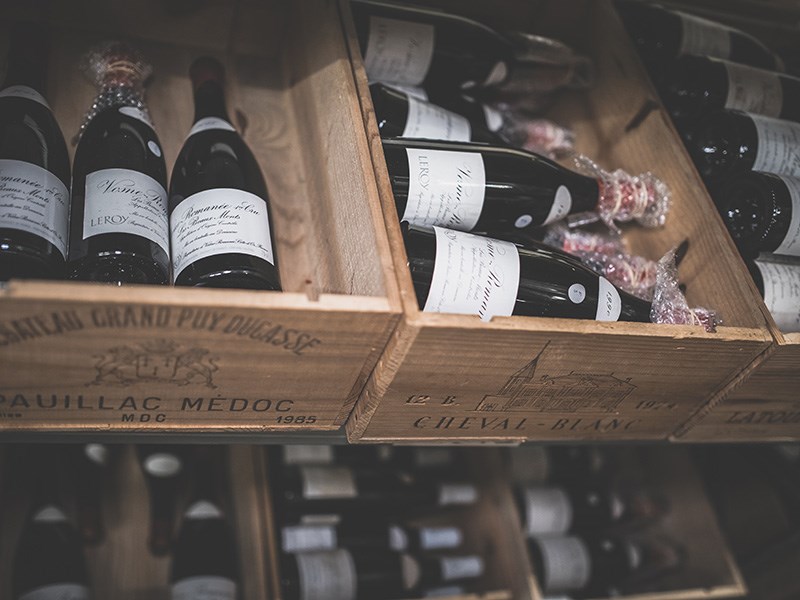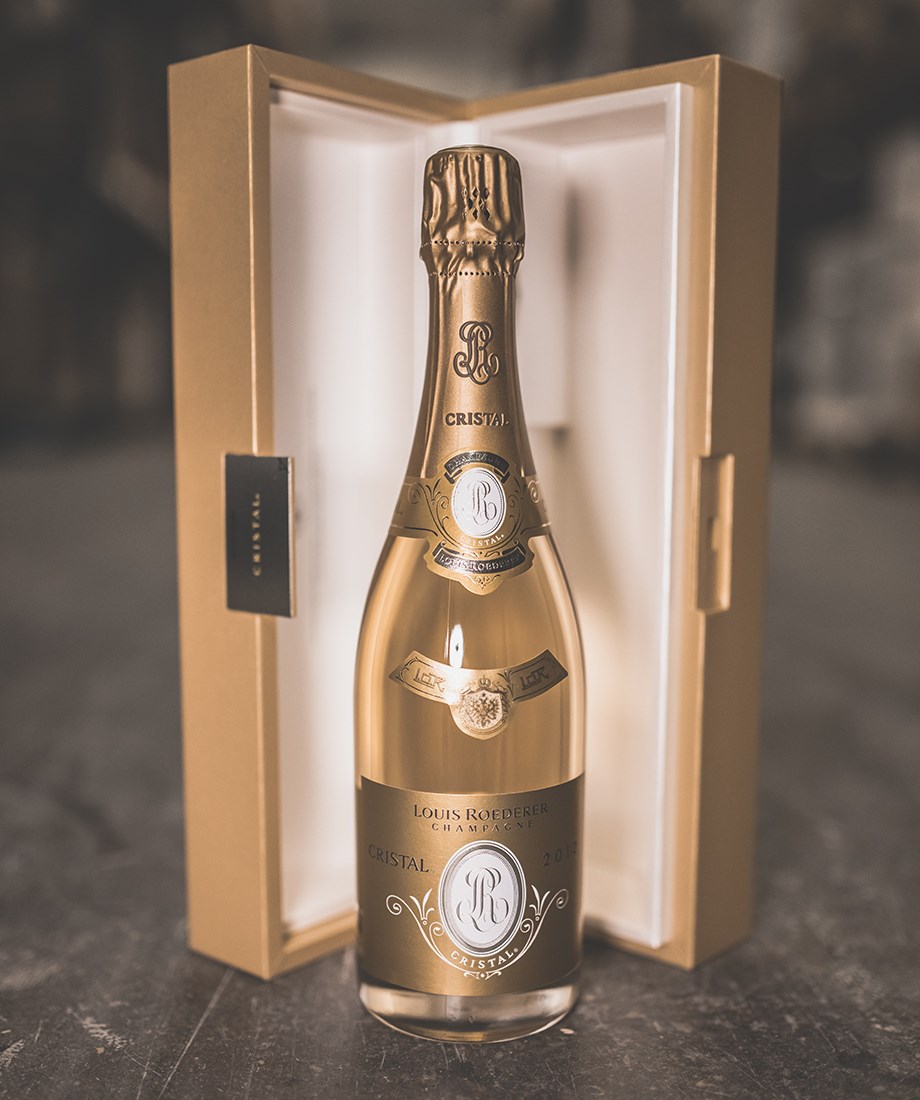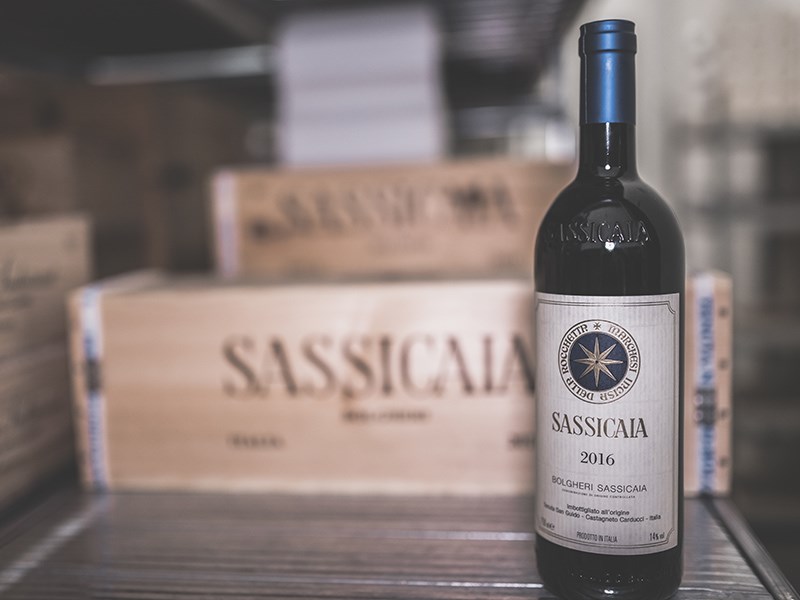Market Analysis - 22. December 2021
Wine Investment In 2021: A Extraordinary Year!
As the year comes to an end, it is time to look back on a crazy year for wine investors on all fronts.
The End Of The Year Is Approaching - And What A Year!
2021 has been an eventful year by any measure, with a series of events that will go straight into the history books. Trump supporters stormed Capitol Hill, the US pulled its military presence out of Afghanistan, Elon Musk and Richard Branson duelled to send the first tourists to space, all while 'Perseverance', a so-called Mars Rover, has been zooming around the Red Planet taking pictures.
Europe is facing its worst energy crisis since the 1980s, but before then, we could enjoy the 2020 European Football Championship and the 2020 Olympic Games - in 2021 (!!). COVID-19 has continued to be the dominant headline. Yes, and besides that, 2021 also became the year when the British finally freed themselves from the EU.
In other words, 2021 has been a momentous year that is now coming to an end. It gives us reason to pause and look back through the glasses of the wine investor.
Below you can read our report on the year, focusing on each of our main categories. Indeed, with a globalized world, international events of the caliber above can also affect the wine trade, and the world's wine traders in 2021 are a chapter all of its own.

Burgundy
Burgundy is the largest category based on our portfolio composition recommendation*, and its expensive wines have only become more costly in the past year - much to the delight of those who have invested in this category.
The trend has been evident in the market: There has never been consumed so much and so good wine, as we have experienced in 2021. Consumption of the best wines seems to have moved from restaurants to private homes under the world's lock-down, while travel restrictions and more have probably simultaneously helped to skyrocket the need for self-indulgence.
The above corresponds to the 2019 vintage from Burgundy, which on the one hand, is historically poor in terms of volumes produced, while on the other hand, the quality has been historically good. By the way, this was something we highlighted already in April this year when we predicted sharply rising prices.
Scarcity, quality, and hence demand have driven up prices earlier than expected, affecting the surrounding vintages. Low yields and high quality have led to high demand and certain wines almost impossible to find anywhere in the market.
It has led to sharply higher prices and YTD returns across all Burgundy wines at RareWine Invest of just under 19 %.
As a result, we have sent out a message to several investors that there may be attractive sales opportunities in this context that make it appropriate to look at the possibility of taking home profits and/or reinvest. The premise of long-term wine investing has not changed in any way, but an abnormally high annual return like this may be relevant for some investors to take action on, which we of course are committed to assisting you with. Contact your portfolio advisor if we should discuss your options.
The future for wine investors exposed to Burgundy may well offer a further lucrative scenario. Namely, the 2021 harvest, due to a spring night frost, results in historically small productions, which could help create even more competition for already scarce volumes.
We may even be looking at a Burgundy drought in the coming years, with the significantly reduced volumes so hard to come by that even the surrounding vintages will be in higher demand than usual. We see the same picture with the 2020 vintage, where the first ratings are starting to tick in, suggesting another great vintage in terms of quality, but with tiny quantities available.
*40% Burgundy, 30% Champagne, 15% Italy, 10% Rest of World, 5% Bordeaux.

Champagne
As in Burgundy, external circumstances have affected trade in Champagne and hence prices for available quantities.
In the context of a global shutdown and a blocked Suez Canal, it is hardly surprising that global supply chains are under astronomical pressure.
Pressure has also hit the Champagne world, where entire supply chains from producer to consumer have probably never before experienced such a shortage of Champagne. Producers face considerable challenges in getting new releases to market due to a lack of raw materials such as glass and packaging. Due to the aforementioned tight supply chains, the major distributors have either run out or are having difficulty getting the goods distributed on the global market. Even when they succeed, it is at historically high freight costs.
At the same time, the reopening of the global community meant that consumers could be able to get back to their usual social habits, including traveling. Guests thus returned to bars, restaurants, and events, with massive consumption of Champagne as a result.
As a consequence of the above, Champagne prices have skyrocketed, to say the least, making Champagne the category with by far the highest return in 2021. YTD returns on all Champagne in portfolios managed by RareWine Invest hit a record high of 39%.
As is the case with Burgundy, there may also be opportunities to bring home profits on selected Champagnes. If you have thoughts in this direction despite a recommendation for a longer investment horizon, we would also recommend that you discuss the possibilities with your portfolio advisor. We consistently monitor the market for exceptional sales opportunities and contact individual investors if we feel that the investment premise for a specific wine has changed significantly. Despite extraordinary returns in the short term, Champagne remains a long-term investment.
By the way, Winemag published 15/12-2021, an exciting article about Champagne scarcity in the coming years. Read it here, and get much wiser on what they call "A Perfect Storm of Disruptions Will Create a Global Champagne Shortage"

Italy
For several years, Italy has been a prominent 'underdog' on the wine scene - so much so that around the start of 2021, we separated Italy from the Rest of World category and changed our default recommendation. Before, it was 20% Rest of World. Now it's 15% Italy and 10% Rest of World at the cost of reducing the Bordeaux recommendation by half to 5%*.
While Burgundy wines, for example, have only become more unattainable in recent years. The quality of the best Italian wine has gradually improved over the years. In particular, Italian wines have become attractive alternatives for many wine drinkers. As a result, Italian wines have gained an even more excellent place in the stunning spotlight.
Enormous quantities of wine are produced in Italy, and one must choose carefully. In particular, the Piedmont and Tuscany regions attract the most attention when it comes to investment wines. These include Barolo, Brunello di Montalcino and, not least, the ever-growing crowd of Super-Tuscans.
We have not seen the same scarcity and supply chain challenges among Italian wines. A growing interest in these particular wines and a strong recovery in the wine market, in general, have also meant that there have been high returns in Italy. The YTD return on all Italian wine in portfolios managed by RareWine Invest currently stands at 14%.
*Before: 40% Burgundy, 30% Champagne, 20% Rest of World, 10% Bordeaux
Now: 40% Burgundy, 30% Champagne, 15% Italy, 10% Rest of World, 5% Bordeaux

Rest-of-World
Rest-of-World is the slightly more arbitrary category, containing the wine that does not fit into the other categories - particularly American wines and whisky.
The trade war between the EU and the Trump administration led, among other things, to US punitive tariffs on several European goods, including the majority of European wine*. A punitive tariff that made wines more expensive for US consumers overnight has almost certainly led to an even greater domestic focus on US wines. This direction has persisted throughout 2021 and is likely to continue well into 2022.
Whisky, which for investment is often associated with higher risk than wine, has also become famous from a global perspective. Including, in particular, the Scotch and Japanese, which are our primary focus. The rising popularity and new younger generations of whisky connoisseurs also mean that whisky for investment is becoming more popular, not least with those with a slightly higher risk profile, as the returns on whisky can be very attractive.
However, US wines weigh most heavily in the Rest-of-World category, which has returned 12% YTD.
*Italian wine and Champagne were exempted for unfathomable reasons
Bordeaux
The otherwise impressive and renowned Bordeaux wines have gradually become less and less important in our investment business. In short, this is mainly due to oversupply and lack of willingness on the part of producers to bring prices down to a level in line with supply and demand. You can read more about this here.
Our continued focus on the category is a recognition that if you look in the right places and invest under the right conditions, there is still potential to be found. However, it has been more or less limited to Petrus, Le Pin, and En Primeur in recent years.
That said, Bordeaux in portfolios managed by RareWine Invest has had a particularly good year, probably assisted by the general upturn in the wine market. YTD returns on Bordeaux wines managed by RareWine Invest landed at a whopping 14%.
RareWine Invest's opinion
To finish where we started, it has to be said that 2021 has been a crazy year by any measure.
We have had a year of exceptional returns across all categories, and we have had the pleasure of reaching out to several investors with unique sales opportunities. If you want to take home a profit, even if the investment horizon is not exhausted, please do not hesitate to contact your portfolio advisor to discuss the possibilities.
YTD, 640 positions have been sold, yielding an average realized return of 18% for those investors. As well as being a good return, this confirms the liquidity in the market and the strong investment properties of wine.
While we join investors in celebrating the strong returns, both realized and potential, we urge caution and recommend staying true to your investment strategy and the fundamental principles on which wine investing is based: solid and stable returns, low risk, exceptional resilience, and a long horizon.
Overall, 2021 YTD has resulted in an average return of 18.8% when including all wines. Also, wines included that have only been added to portfolios in 2021 and have not yet started to increase in price.
Despite a great year, the premises remain unchanged, and so does our view on wine investing.
